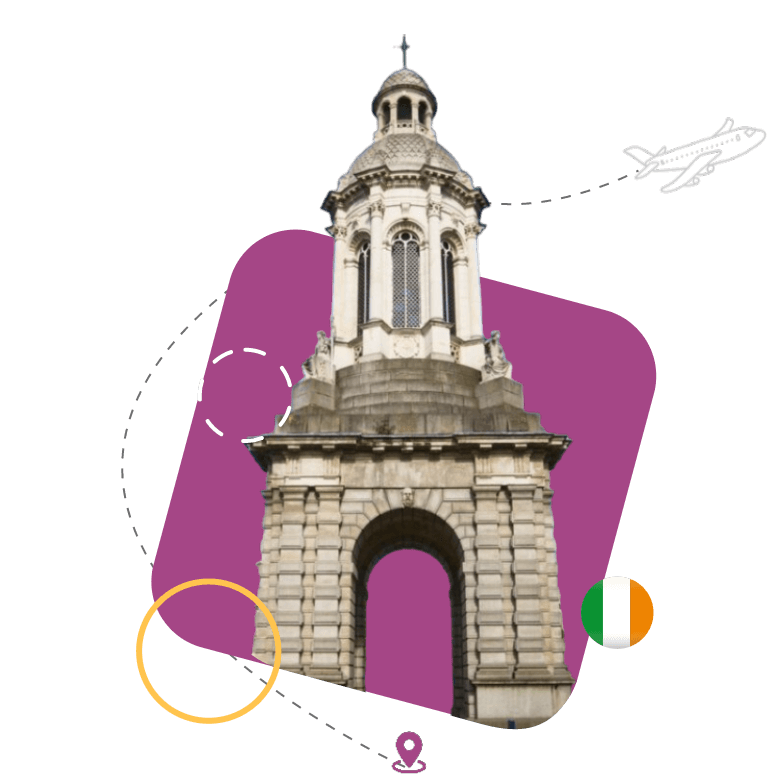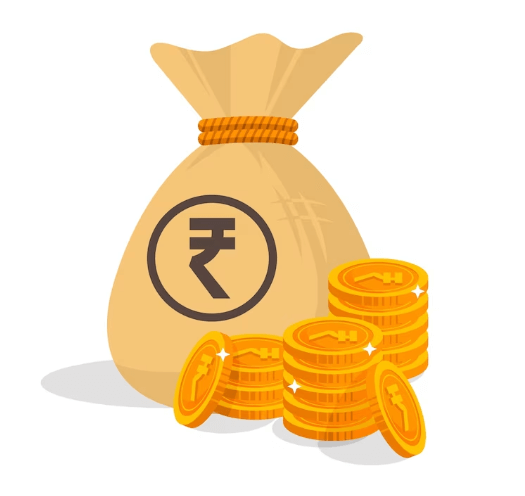Study In Ireland


Why study in the Ireland
Career Opportunities
Benefits of Studying in Ireland
Studying in Ireland offers numerous advantages, thanks to its top-notch universities and student-centered teaching methods. Here are some key benefits:
Focus on Innovation and Research
Irish universities prioritize innovation and research, providing students with opportunities to engage in cutting-edge projects and contribute to advancements in their fields.
Wide Range of Courses and Universities
Ireland provides plenty of options for courses and universities, allowing students to pursue their desired field of study.
Safe Environment
Ireland is renowned for its safety, offering students a secure and welcoming environment conducive to learning.
Support for Personal and Professional Growth
The educational curriculum in Ireland is designed to promote both personal and professional development, empowering students to excel in their chosen careers.
Highly Developed Country
Ireland boasts a modern democracy and is considered a highly developed country, offering students access to world-class infrastructure and amenities.
Global Business Hub
With a thriving economy and numerous multinational corporations, Ireland serves as a global business hub, providing students with valuable networking and career opportunities.
Other benefits of studying in Ireland for international students include,
| Higher Study Options | Part-time work duration allowed | Post-study work permit | Can dependants work full-time? | Is schooling free for dependant children | PR option available for post-study and work |
|---|---|---|---|---|---|
| Bachelors | 20 Hours per week | 2 Years | Yes | Yes (Public schools are free) | No |
| Masters (MS/MBA) |
Best Universities in Ireland
When considering higher education in Ireland, these institutions stand out for their academic excellence and reputation:
Best Courses to Study in Ireland
Ireland stands out as a leading destination for specialized study options across various fields. With renowned universities offering a plethora of courses, international students can pursue graduate, postgraduate, master’s, and specialized programs tailored to their interests and career aspirations.
Top Courses to Study in Ireland
- Artificial Intelligence
- Cloud Computing
- Data Science
- Data Analytics
- Cybersecurity
- Computer Science
- Pharmaceuticals
- Business Analytics
- Accounting and Finance
- Digital Marketing
Best Courses in Ireland for Indian Students
- Data Science
- Cybersecurity
- Data Analytics
- Big Data
- Cloud Computing
- Business Analytics
- Computer Science
- Software Engineering
- Digital Marketing
- Banking and Finance
Courses in High Demand in Ireland
- Business Analytics
- Banking and Finance
- Data Science
- Software Engineering
- Pharmaceutical Sciences
Specialized Courses in Ireland
- Robotics
- Software Engineering
- Computer Engineering
- Nanotechnology
Highest Paying Jobs in Ireland
Professions in Law, Architecture, Computer Science, and Finance offer lucrative earning opportunities
Study Intakes in the Ireland
Plan your academic journey with Ireland’s two study intakes each year:
- Autumn Intake: Suitable for undergraduate and postgraduate programs, running from September to December.
- Spring Intake: Ideal for undergraduate and postgraduate programs, spanning from January to May.
Ireland Study Visa Deadlines to Apply
| Higher Study Options | Duration | Intake Months | Deadline to Apply |
|---|---|---|---|
| Bachelors | 3/4 Years | Sep (Major), Feb (Minor) | 6-8 months before the intake month |
| Masters (MS/MBA) | 2 Years | Sep (Major), Feb (Minor) |


Cost of studying in the Ireland
The cost of attending universities in Ireland varies depending on the institution and the chosen course. Below is a breakdown of the approximate annual fees
| Types of Expenses | Annual Expenses in € |
|---|---|
| Tuition Fees for one-year (Indicative) | 15000 |
| Living and Accommodation | 10000 |
| Airfare to Ireland (Indicative) | 700 |
| Visa Fees | 195 |
| Total Expenses | 25895 |
Ireland Government Scholarships
Explore the opportunities offered by these prestigious scholarships for international students, These scholarships provide financial assistance to deserving students pursuing their academic goals in Ireland.
| Scholarship Name | Amount (per year) |
|---|---|
| Centenary Scholarship Program | £4000 |
| Central Bank of Ireland Undergraduate Scholarships for International Students | £29,500 |
| NUI Galway International Students Scholarships | €10,000 |
| India Undergraduate Scholarships- Trinity College Dublin | €36,000 |
| Dublin Institute of Technology (TU Dublin) | €2,000 to €5,000 |
Educational Requirements to Study in the Ireland
| Higher Study Options | Minimum Educational Requirement | Minimum Required Percentage | IELTS/PTE/TOEFL Score | Backlogs Information | Other Standardized Tests |
|---|---|---|---|---|---|
| Bachelors | 12 Years of Education (10+2)/10+3 years Diploma | 55% | Overall, 6.5 with no band less than 6 | Up to 10 backlogs (some private universities may accept more) | NA |
| Masters (MS/MBA) | 3/4 Years of Graduate Degree | 60% | Overall, 6.5 with no band less than 6 |
Why Apply for an Ireland Student Visa?
Access to Top-Quality Education
Ireland is home to several universities ranked within the top 500 globally according to QS World Rankings, ensuring high-quality education and academic excellence.
High Visa Success Rate
Scholarships Available
Post-Study Work Opportunities
Upon graduation, international students are eligible for a two-year post-study work visa, providing ample time to gain valuable work experience and explore career opportunities in Ireland.
Efficient Visa Processing
The visa processing time for Ireland is relatively fast, typically taking between 8 to 10 weeks, ensuring a smooth and efficient application process for students.
Affordable Tuition Fees
Ireland Student Visa Eligibility
To be eligible for an Ireland student visa, applicants must meet the following criteria:
- English Language Proficiency: Applicants must demonstrate proficiency in English by achieving a minimum score of 5 bands in IELTS, or equivalent in TOEFL, Cambridge Proficiency, Cambridge Advanced, or PTE.
- Academic Transcripts: All academic transcripts from previous educational institutions must be provided as part of the visa application.
- Medical Insurance: Applicants must have valid medical insurance coverage for the duration of their stay in Ireland.
- Contact Information: The visa application must include complete contact information and a clear explanation of the reason for traveling to Ireland.
- Financial evidence: Applicants must provide evidence of sufficient financial funds to cover the cost of studying and living in Ireland.


Ireland Student Visa Requirements
To apply for a student visa for Ireland, applicants must fulfill the following requirements:
- Acceptance Letter: A letter of acceptance from the university or educational institution where the applicant intends to study.
- Tuition Fee Proof: Evidence of payment or proof of sufficient funds to cover tuition fees for the duration of the course.
- Financial Stability: Documentation demonstrating adequate financial resources to support living expenses in Ireland throughout the study period.
- Visa Documentation: Completed application for an Ireland student visa along with any required study permits.
- Educational History: Detailed educational history, including transcripts, certificates, and any relevant qualifications. Applicants must also provide explanations for any gaps in their academic studies.
- English Language Proficiency: Proof of proficiency in English, such as IELTS or TOEFL scores, to meet the language requirements of the chosen course.
How to Apply for an Ireland Student Visa

Check Eligibility

Prepare Documents

Online Application

Await Approval

Travel to Ireland
Don't let paperwork hold you back from your dreams.

Ireland Student Visa Fees
The cost of an Ireland student visa varies depending on the type of visa and other factors. Here’s a breakdown of the fees:
- Long Stay D Visa (Single Entry): €80
- Long Stay D Visa (Multi-entry): €150
- Short Stay C Visa (Single Entry): €80
- Short Stay C Visa (Multi-entry): €150
- Transit Visa: €40
Please note that these fees are subject to change and may vary based on the duration of stay and entry type.

Ireland Student Visa Processing Time
The processing time for an Irish student visa is typically between 8 to 10 weeks. However, if any necessary documents are missing or additional processing is required, the processing time may be extended. Therefore, it is important to ensure that all required documents are submitted promptly when applying for the visa.
Ireland Post Study Work Visa
Upon completion of your studies in Ireland, you may have the opportunity to stay in the country to seek employment through the Irish Third Level Graduate Scheme. This scheme allows non-EU third level graduates who are legally residing in Ireland to remain in the country for the purpose of securing employment or applying for a green card/work permit.
Key Points
- Under the scheme, graduates are permitted to work full-time, up to 40 hours per week.
- It’s important to note that the permission granted under the Irish Third Level Graduate Scheme is non-renewable.
- Eligibility for the scheme is subject to specific rules and regulations, as outlined below.
FAQs







